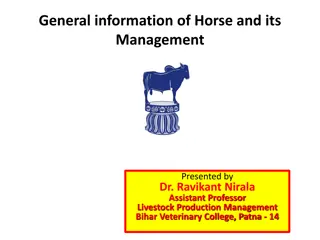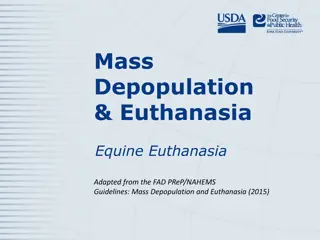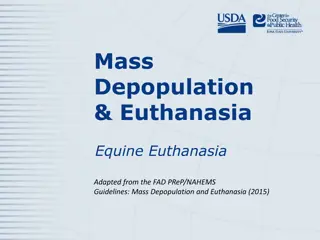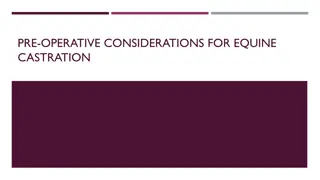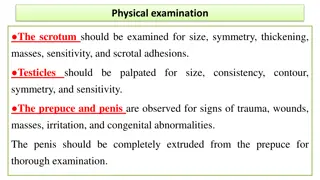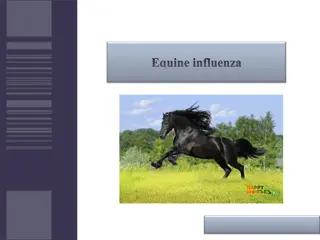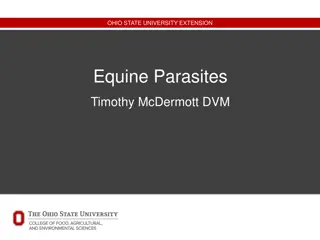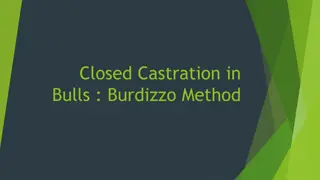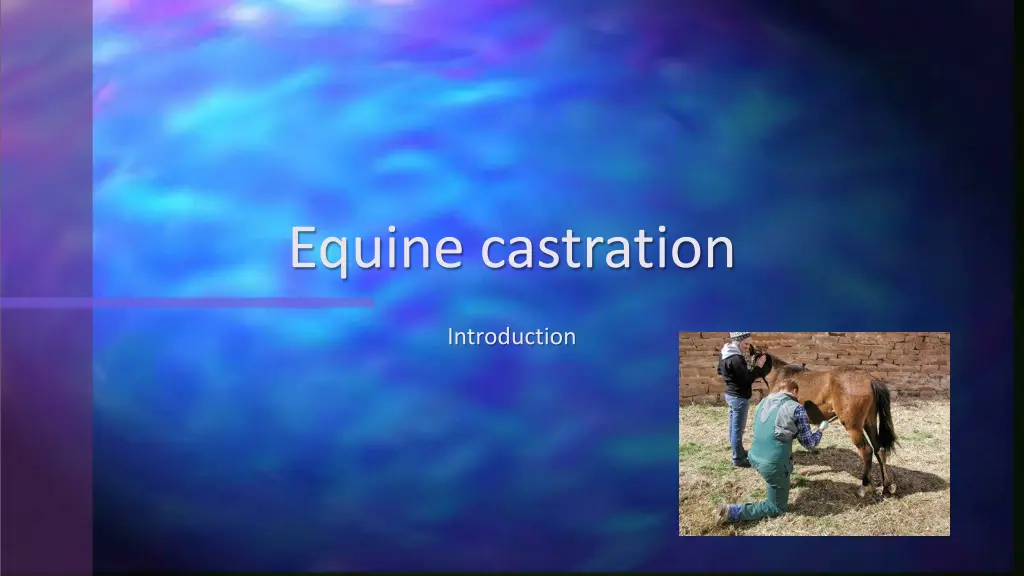
Understanding Equine Castration Procedure
Equine castration is a surgical procedure performed by a veterinarian to remove a male horse's testicles. It is done to make horses more manageable, easier to train, and to determine their breeding value. Different castration techniques and methods of restraint are used depending on the horse's age and status. Learn more about the importance and methods of equine castration in this comprehensive guide.
Download Presentation

Please find below an Image/Link to download the presentation.
The content on the website is provided AS IS for your information and personal use only. It may not be sold, licensed, or shared on other websites without obtaining consent from the author. If you encounter any issues during the download, it is possible that the publisher has removed the file from their server.
You are allowed to download the files provided on this website for personal or commercial use, subject to the condition that they are used lawfully. All files are the property of their respective owners.
The content on the website is provided AS IS for your information and personal use only. It may not be sold, licensed, or shared on other websites without obtaining consent from the author.
E N D
Presentation Transcript
Equine castration Introduction
What is castration ? Castration is a surgical procedure performed by a veterinarian that is defined as the removal of the testicles of a male horse. The procedure can be accomplished through sedation and local anesthesia in a standing position or through general anesthesia and the horse lying on its side (lateral recumbency). This procedure is typically performed once the horse is skeletally mature to reap the beneficial effects of testosterone.
Why castration? This procedure is typically performed on colts to make them more manageable and easier to train. Castration is also necessary if the horse has minimal breeding value. In horses with potential breeding value, castration may be delayed to determine if the horse has enough performance ability to make him attractive as a future sire.
Techniques for castration Regardless of whether the horse is castrated standing or anaesthetized and recumbent, the testes can be removed using one of three techniques: Open: 3-4yrs Closed: for all ages including stallions Semi-closed: mature horses and stallions, ligatures and general anesthesia is used
Methods of restraint Castration can be performed with the horse sedated and standing, after the spermatic cord is anaesthetized. Or, the horse can be anaesthetized and castrated in recumbency.
SUMMARY OF FIELD CASTRATION http://www.r-vets.org/Castration-Basics.html

